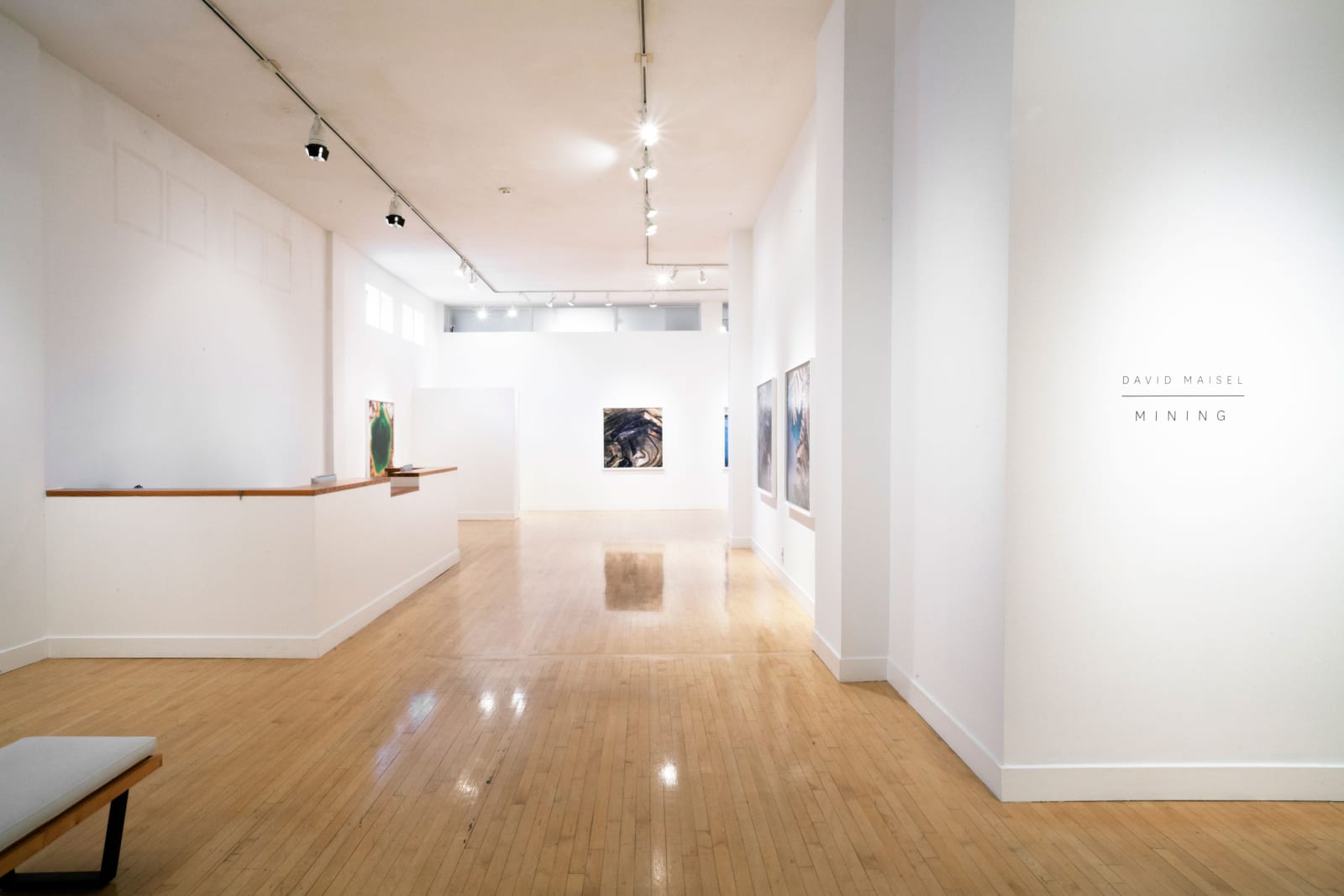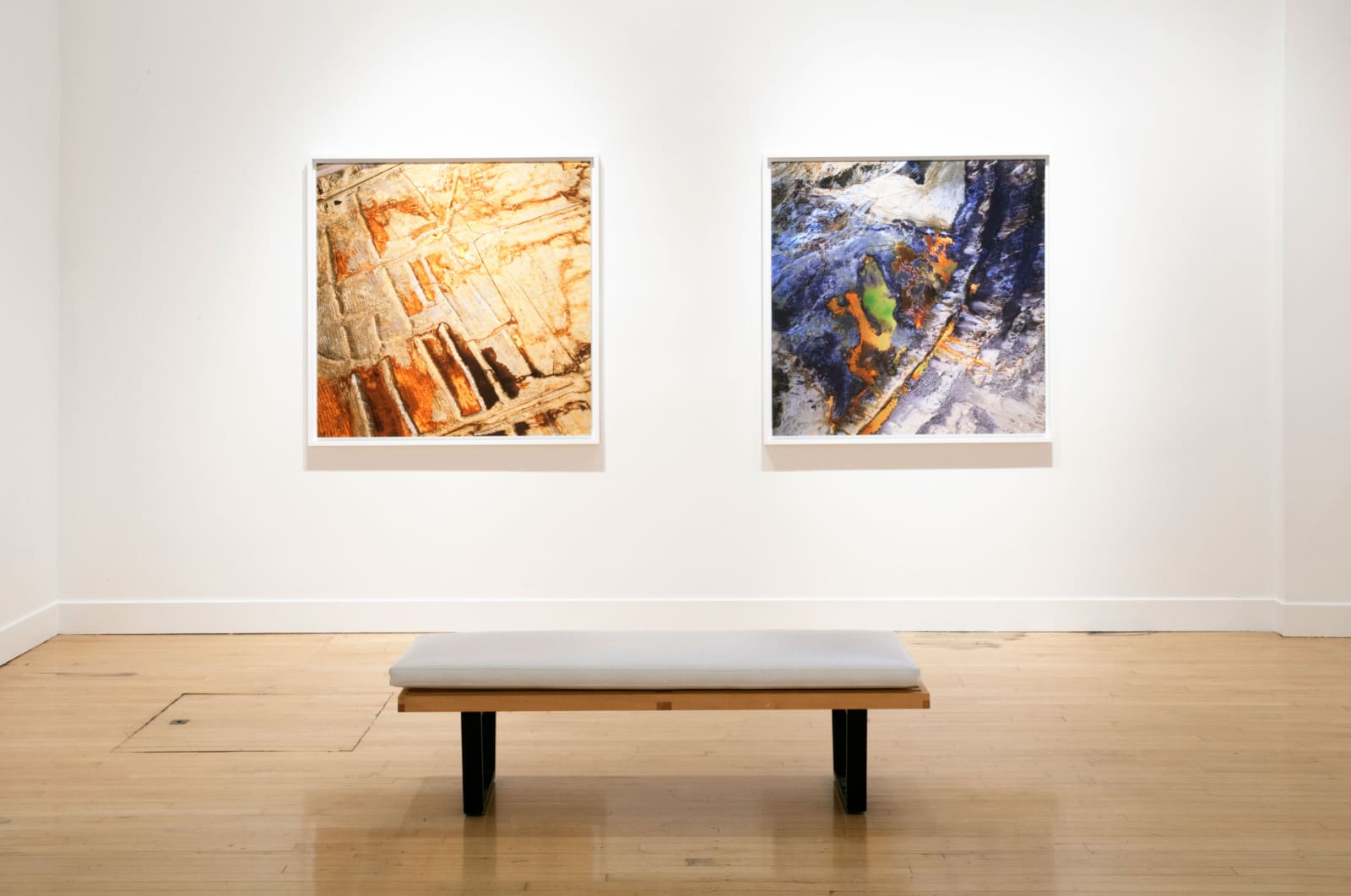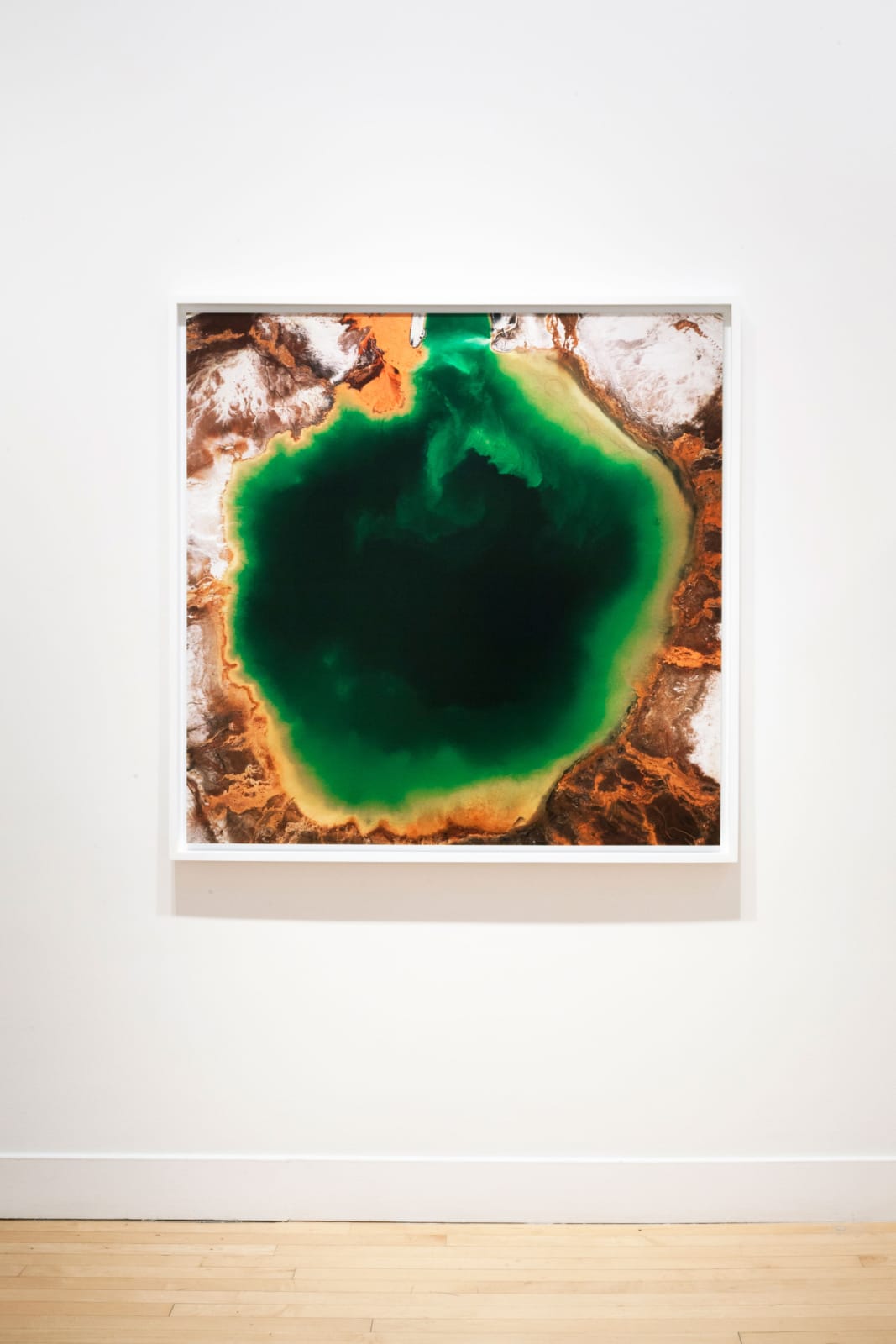David Maisel: Mining
David MaisEL first began to photograph open pit mines from the air in the mid–1980s, intrigued by the radical transformation of the American landscape by the extraction of natural resources. For the past three decades, he has continued to pursue this subject, resulting in a powerful body of work that considers the aesthetics and politics of environmentally impacted sites such as open pit mines, clear-cut forests, rampant urbanization and sprawl, and zones of water reclamation.
For his fifth exhibition with Haines Gallery, Maisel presents Mining – a selection of photographs from The Mining Project and American Mine series, never before seen at the gallery. These works consider the relationship between nature and humanity, and encompass both stark documentary and tragic metaphor. Mining coincides with the release of Maisel’s new monograph by Steidl, Black Maps: American Landscape and the Apocalyptic Sublime, the first in-depth survey of the artist’s aerial projects, which also include The Lake Project, Terminal Mirage and Oblivion. The book includes an introduction from Julian Cox , essays by Natasha Egan, Geoff Manaugh, Alan Rapp, Kirsten Rian, Joseph Thompson and Kazys Varnelis, and a poem by Mark Strand.
With The Mining Project (1989), Maisel negotiated a deliberate shift from black-and-white images to color, and started to produce large-scale photographs that make greater use of abstraction. Natasha Egan, Director at Museum of Contemporary Photography, Chicago, suggests, “[h]is photographs derive their effectiveness through formal choices involving color, scale, perspective, and abstraction, which amplify their seductive nature, and conjure the elusive sublime.” The ambiguity of what is depicted and the apparent toxicity suggested by the saturated colors that pervade these colossal human-made sites leave one with an overall sense of disquiet, torn between attraction and abhorrence.
With American Mine (2007-present), Maisel focused specifically on mines situated along the Carlin Trend in northeastern Nevada, the most prolific gold mining district in the Western Hemisphere. In describing these photographs, Geoff Manaugh writes, “Discolored oceans of chemical runoff wash across vehicle tracks with acid tides. Retaining walls and stabilized slopes loom over assembled superscapes of mine detritus, abandoned shells of industrial insects dwarfed by the world they’ve helped create.”


















